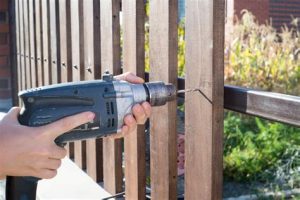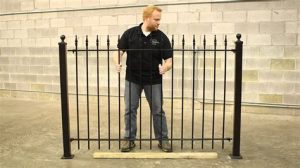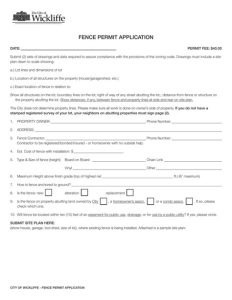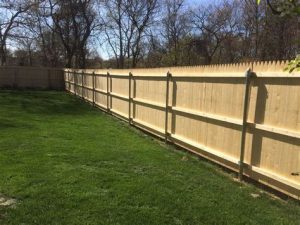Discover the challenges and solutions for installing fences in rainy conditions, including material impacts, tips, and damage prevention strategies.Installing a fence is often a significant investment for homeowners, providing both privacy and security. However, the weather can be a major factor in the installation process, particularly during the rainy season. While some may think that pouring rain is an obstacle, it can actually pose unique challenges and influence the choice of materials and techniques used. In this blog post, we’ll explore the realities of installing fences in wet conditions, including the potential impacts of rain on various materials, essential tips for successful installation, strategies for preventing damage to fence posts, and the importance of ensuring proper drainage. Understanding these elements can help you navigate rainy weather and achieve a fence that not only looks great but stands the test of time.
Challenges of Installing Fences in Rain
Installing fences in rainy weather can pose several challenges that can delay the project and affect the overall quality of the installation. One of the primary issues is the softening of the ground. Wet soil can become muddy and unstable, making it difficult to dig holes for posts.
Additionally, rain can impact the level of precision required during the installation process. If the ground is too wet, it may not hold the fence posts firmly in place, leading to potential leaning or misalignment once the soil dries out. This can compromise the structural integrity of the fence.
Moreover, working in rain can be risky. Visibility may be reduced, tools may become slippery, and footing can be uncertain. Hence, it’s vital for installers to prioritize safety and be cautious while working in such conditions.
Impact of Rain on Fence Materials
When it comes to installing fences, understanding the impact of rain on fence materials is crucial. Rain can affect various types of materials differently, and being aware of these effects can save you time and money in the long run.
For instance, wooden fences are particularly susceptible to moisture. Prolonged exposure to rain can lead to wood rot, mold, and warping. To mitigate these risks, it’s essential to choose high-quality treated wood that is more resilient to wet conditions. Regular maintenance, such as applying water-repellent sealants, can also enhance the durability of wooden fences.
Similarly, metal fences can face their own set of challenges in rainy weather. Corrosion becomes a significant concern if the metal is not adequately coated or galvanized. Moisture can create rust, which compromises the structural integrity of the fence. Therefore, selecting rust-resistant materials or applying protective coatings is vital to maintaining the lifespan of metal fences.
Finally, even vinyl fences, which are often promoted as low-maintenance, can be impacted by heavy rain. Water pooling around the base of the fence may lead to instability over time. While vinyl is generally waterproof, it’s still advisable to ensure that there is proper drainage around the fence line during installation.
As you consider installing a fence, remember to take the impact of rain on materials into account.
Tips for Installing Fences in Wet Conditions
Installing fences in wet conditions can be a challenging task, but with the right preparation and techniques, it’s possible to achieve a sturdy and durable fence.
- Choose the Right Time: Wait for a break in the rain whenever possible. If you can schedule your installation during lighter rain or after rainfall has ceased, it will make the job easier.
- Use Proper Gear: Equip yourself with waterproof clothing and suitable footwear. Staying dry will help you maintain your focus and efficiency during the installation process.
- Check Soil Conditions: Wet soil can be tricky. Make sure to check the drainage characteristics of the area, as muddy conditions can make it difficult to dig holes and stabilize posts. If the ground is too saturated, consider postponing the project.
- Utilize Drainage Solutions: If you anticipate a lot of rain, incorporate drainage solutions such as gravel in the post holes or install a French drain to prevent water from pooling around the fence.
- Seal and Protect Materials: Ensure that all wooden materials are treated and sealed properly to withstand moisture, which will help prevent rot and decay.
- Secure Your Tools: Keep tools in a dry place when not in use. Wet tools not only become slippery and harder to manage, but they can also lead to injuries.
Implementing these tips can significantly enhance your fence installation experience in wet conditions. Take extra care to prepare and assess the environment before getting started.
Moreover, if necessary, do not hesitate to consult with professionals who have experience in installing fences during adverse weather. Their insights can prove invaluable in guaranteeing a successful installation.
By being cautious and well-prepared, you can still achieve a quality installation despite the rain, ensuring that your new fence stands strong against the elements.
Preventing Damage to Fence Posts in Rain
Installing a fence is a significant investment, and one of the most critical aspects to consider is preventing damage to fence posts, especially during rainy weather. Rain can be detrimental to your fence, causing posts to rot, lean, or become unstable. Here are some effective strategies to ensure your fence posts withstand the elements.
First and foremost, it’s essential to choose the right materials. Posts made from composite or treated wood are more resistant to moisture. Additionally, using galvanized or stainless steel fasteners can prevent rust and further degradation. Prioritize the quality of your materials to enhance the longevity of your fence.
Another critical factor is the installation technique. Properly setting your posts deep enough in the ground, typically one-third of their length, can help prevent them from leaning or being dislodged by flooding or excessive water. Moreover, creating a slight slope away from the posts can aid in effective drainage, keeping the area around your posts dry. To further protect them, consider applying a waterproof sealant after installation.
| Installation Strategies | Benefits |
|---|---|
| Use treated wood or composite materials | Resistant to moisture and rot |
| Install posts deep with a proper slope | Reduces risk of damage from flooding |
| Apply waterproof sealant | Provides an extra layer of protection |
Ensuring Proper Drainage for Fence Installation
When it comes to installing fences, one of the most critical aspects to consider is proper drainage. Poor drainage can lead to numerous problems that affect the durability and stability of your fence. For example, without adequate drainage, water can accumulate around the fence posts, causing them to rot and weaken over time. This is especially crucial in areas that experience heavy rainfall.
To ensure successful fence installation, it’s important to assess the drainage patterns of your property. Start by observing how water flows on your land during a rainstorm. Look for low-lying areas where water tends to pool, and take notes about any natural drainage systems in place. This can help you decide where to position your fence for optimal longevity.
Additionally, consider incorporating drainage solutions into your fence installation process. Options include ensuring that posts are elevated above ground level, using gravel at the base of the post holes for better water drainage, or installing a slight slope away from the fence to facilitate water runoff.
.
By paying careful attention to drainage, you can avoid common pitfalls associated with wet conditions and create a sturdy fence that withstands the test of time.
Frequently Asked Questions
Can I install a fence during rainy weather?
Yes, you can install a fence during rainy weather, but it may present some challenges such as muddy ground and potential delays.
What are the risks of installing a fence when it’s raining?
Risks include uneven post placement due to soft ground, difficulty in digging, and the potential for soil erosion around posts.
How does rain affect the materials used for fencing?
Rain can cause certain materials, like untreated wood, to absorb moisture, leading to warping or decay over time.
What precautions should I take when installing a fence in the rain?
Ensure that the ground is not excessively muddy, use treated wood to prevent moisture damage, and consider using gravel in the post holes for drainage.
Is it better to wait for dry weather to install a fence?
While it is preferable to wait for dry weather, if the timeline is urgent, focusing on proper techniques can help mitigate the challenges of rainy conditions.
How can I secure fence posts in wet soil?
You can secure fence posts in wet soil by using concrete to anchor them, which will help stabilize them even if the soil is loose or muddy.
What are the long-term effects of installing a fence in rainy weather?
If precautions are not taken, long-term effects may include structural weakness, leaning posts, and the need for repairs due to moisture damage.





